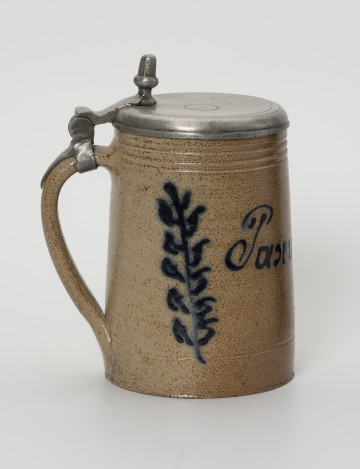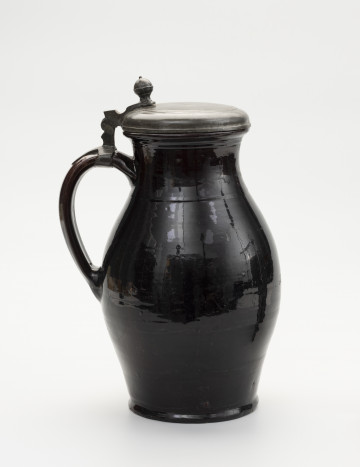
Soda siphon
1950 — 1970
National Museum in Szczecin
Part of the collection: Household
Drinks with natural gas such as beer or drinks artificially carbonated with carbon dioxide, like soda water and lemonade, were most often stored and transported in slim bottles with ceramic stoppers. Thanks to the patenting of the swing-top closure in 1875 in the United States and in 1878 in Germany, they became very popular from the 1880s onwards and remained in common use until the 1970s. It was the ceramic stopper of the bottle, fitted with a rubber gasket that sealed tightly against the neck, mounted on a metal swing arm made of wire, with ends that fit into special holes near the bottle's mouth, that improved the ease of opening and closing the bottles and minimised the loss of carbonation when storing fizzy drinks. In Poland, bottles of this type were often called krachla (from the Austrian name Kracherl for lemonade). The bottle presented here, though found in the Szczecin area, originates from Silesia, where, in Gliwice, a beer wholesaler and a mineral water factory run by Kurt Reifegerste operated, probably from the 1930s until 1947. Today, we are seeing a resurgence of containers with this type of closure, primarily as beer bottles from small, local breweries. Iwona Karwowska
Author / creator
Object type
bottle
Technique
extrusion, wyrób fabryczny
Material
glass, ceramic, rubber, metal
Origin / acquisition method
legal transfer
Creation time / dating
Creation / finding place
Owner
The National Museum in Szczecin
Identification number
Location / status

1950 — 1970
National Museum in Szczecin

1840 — 1860
National Museum in Szczecin

1850 — 1900
National Museum in Szczecin
DISCOVER this TOPIC
Museum of King Jan III's Palace at Wilanów
DISCOVER this PATH
Educational path